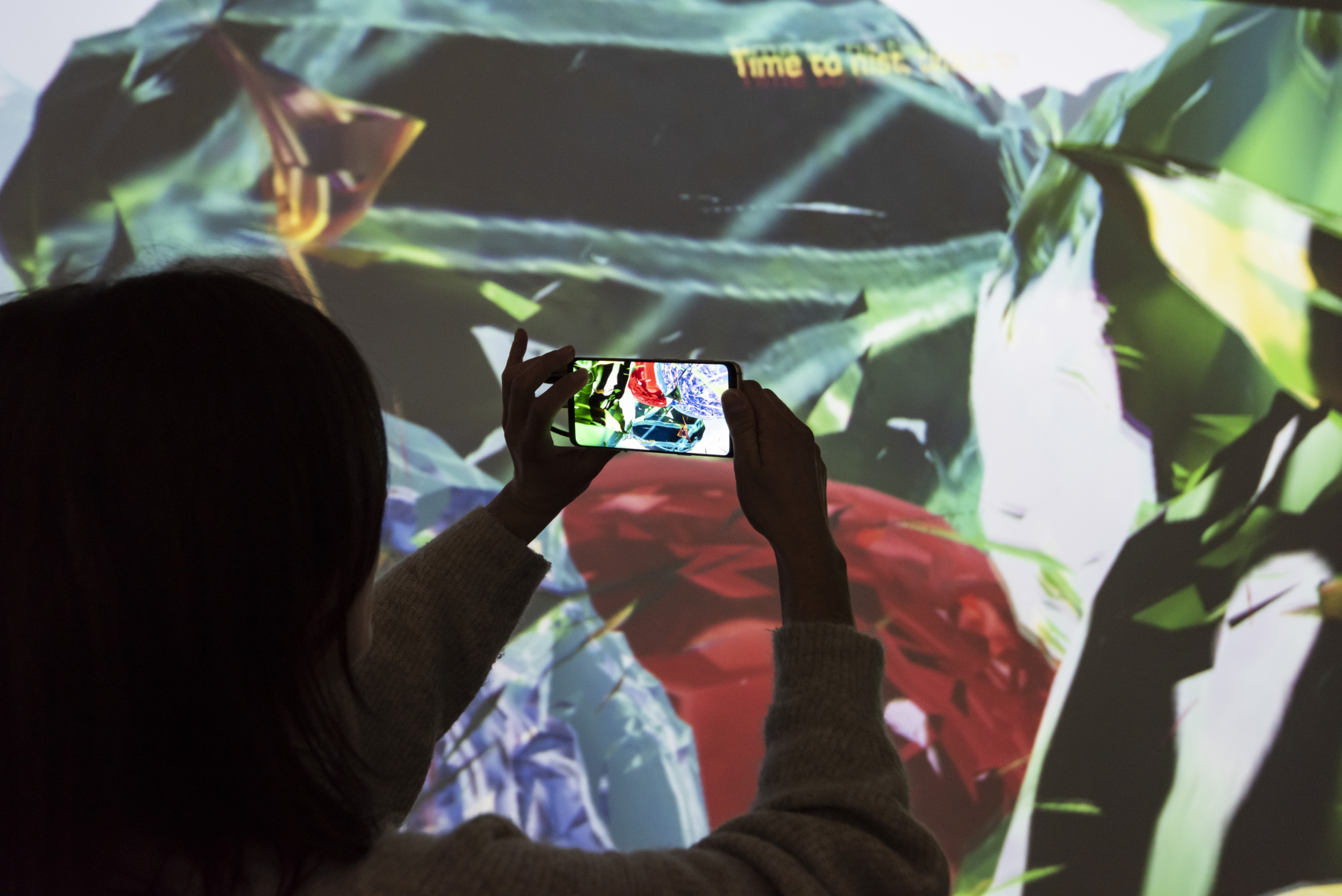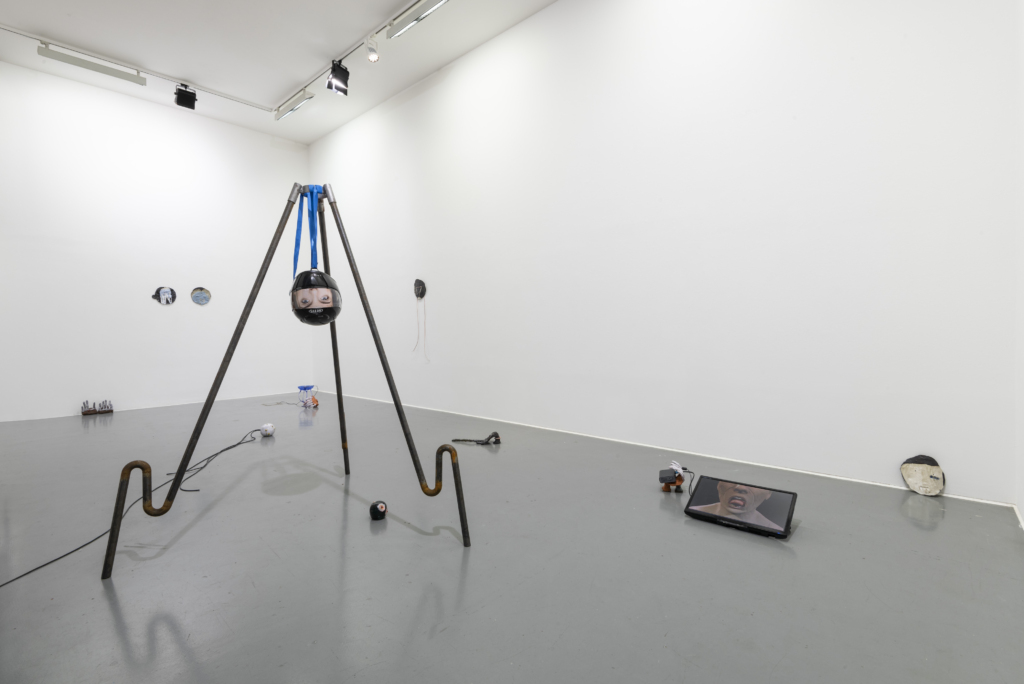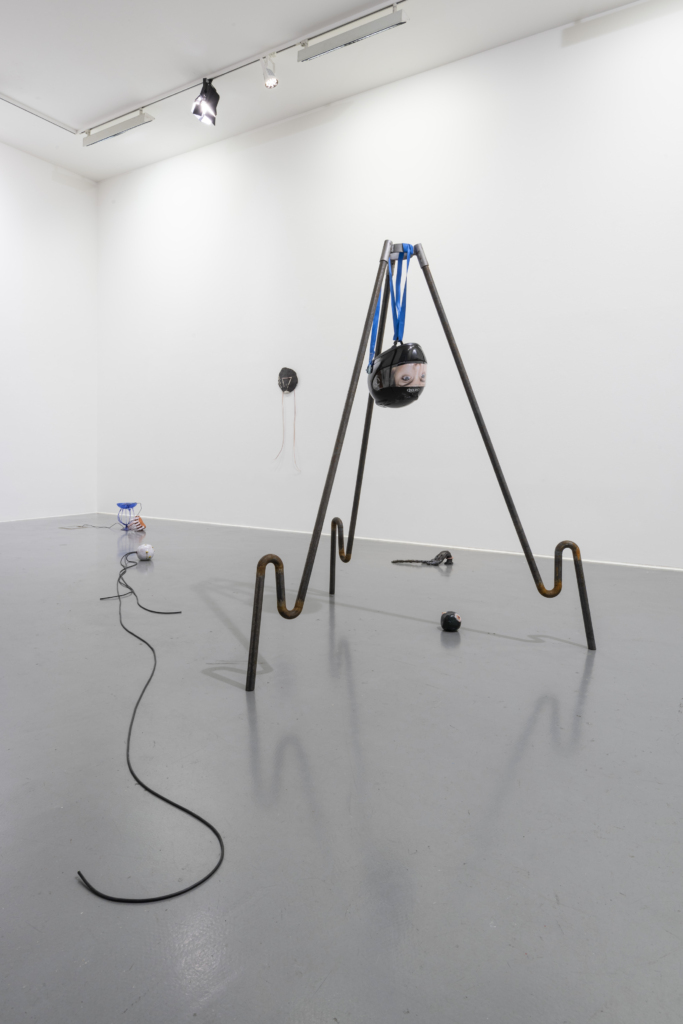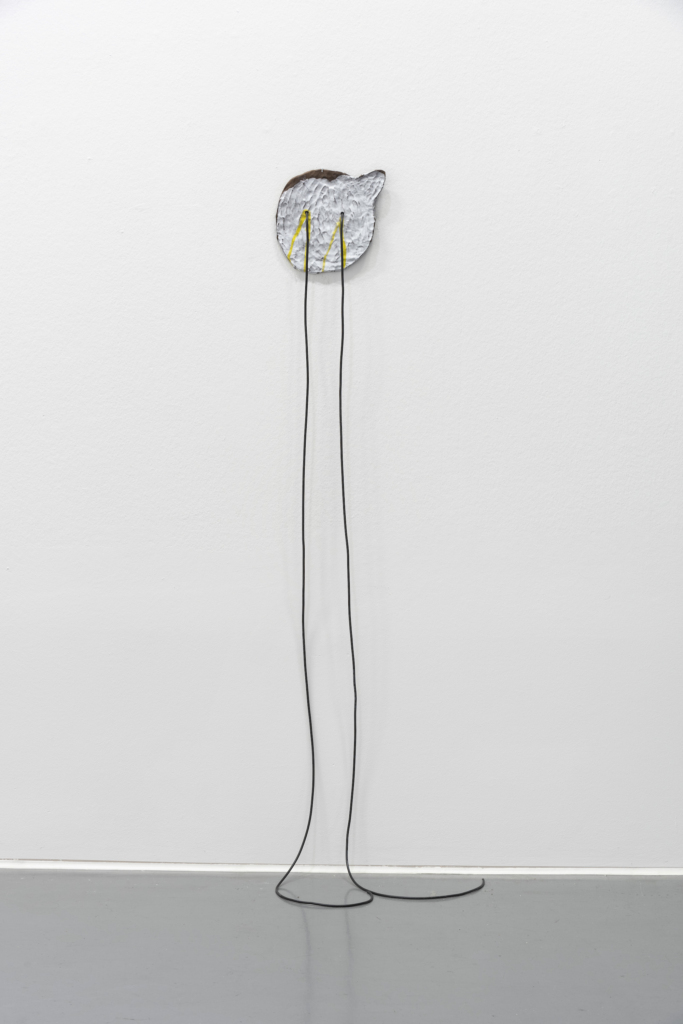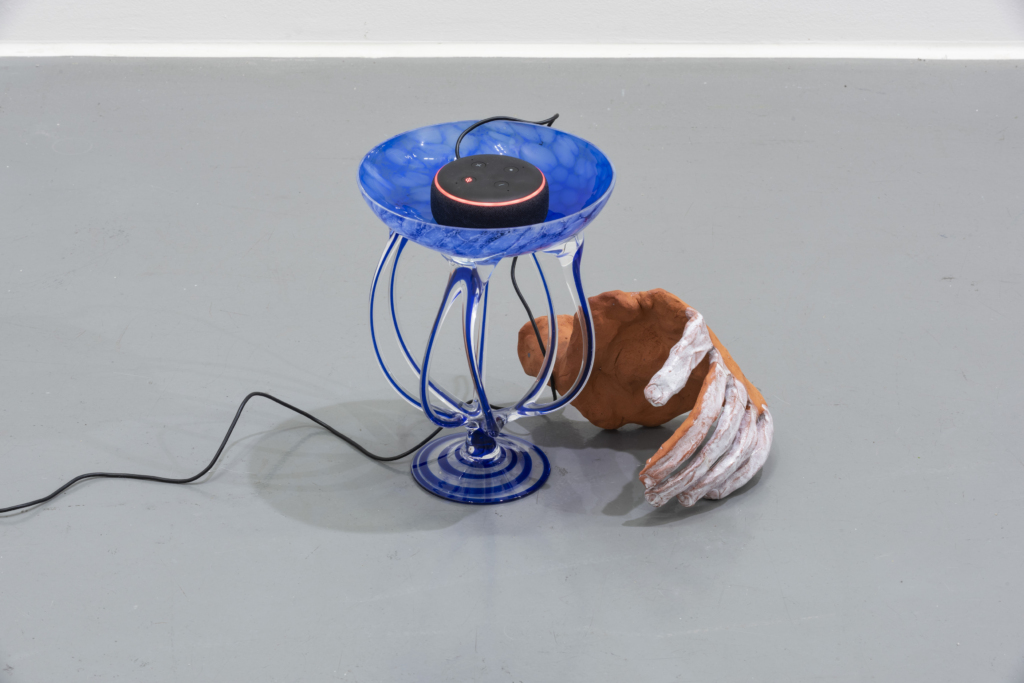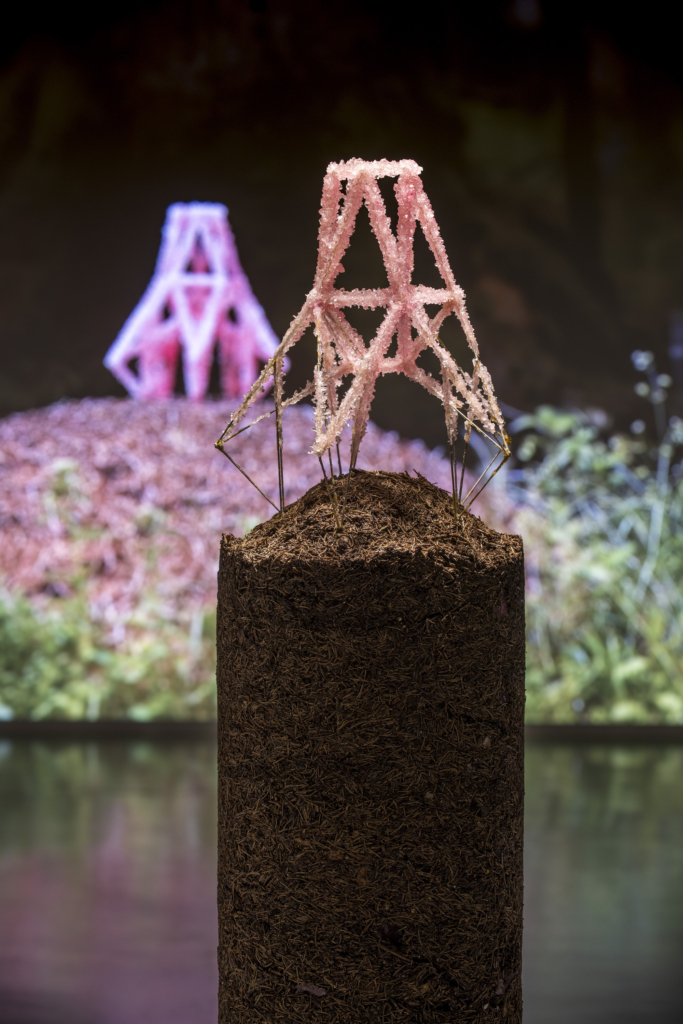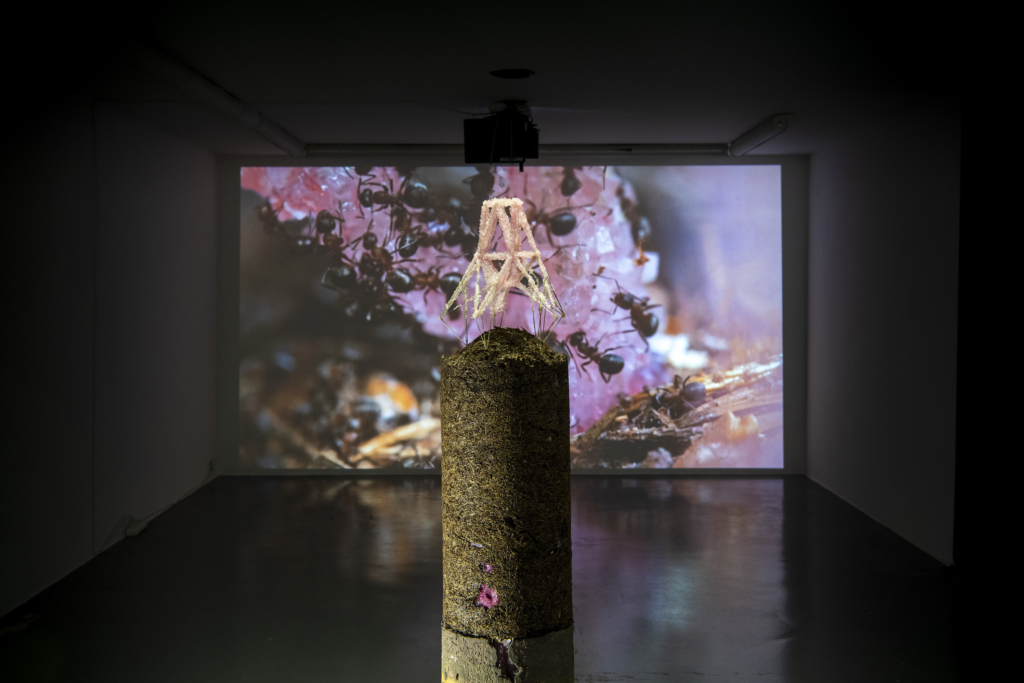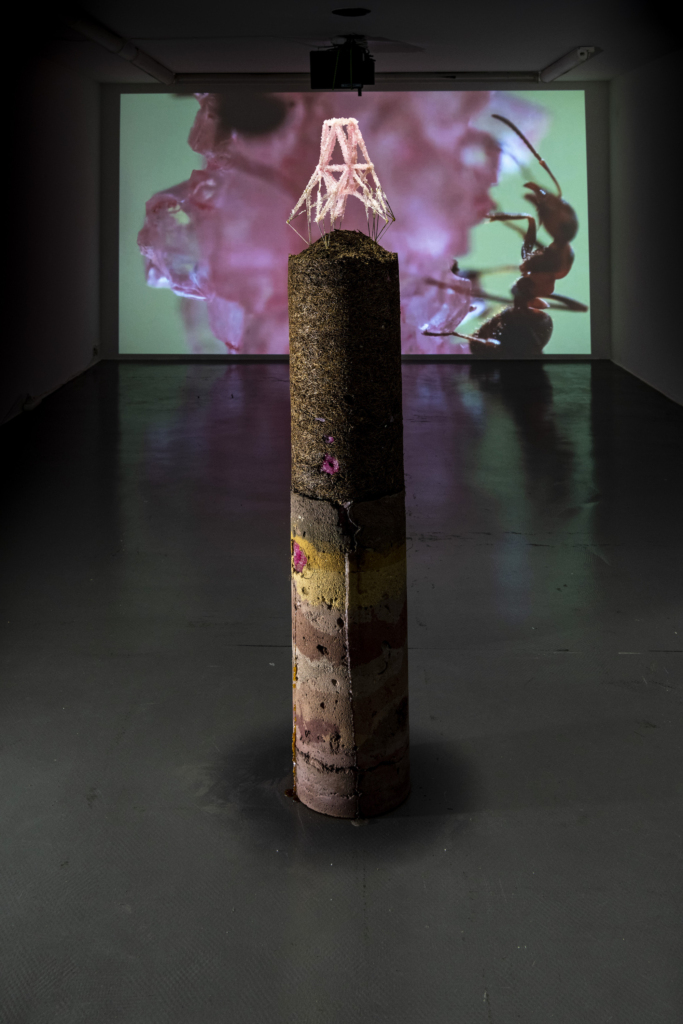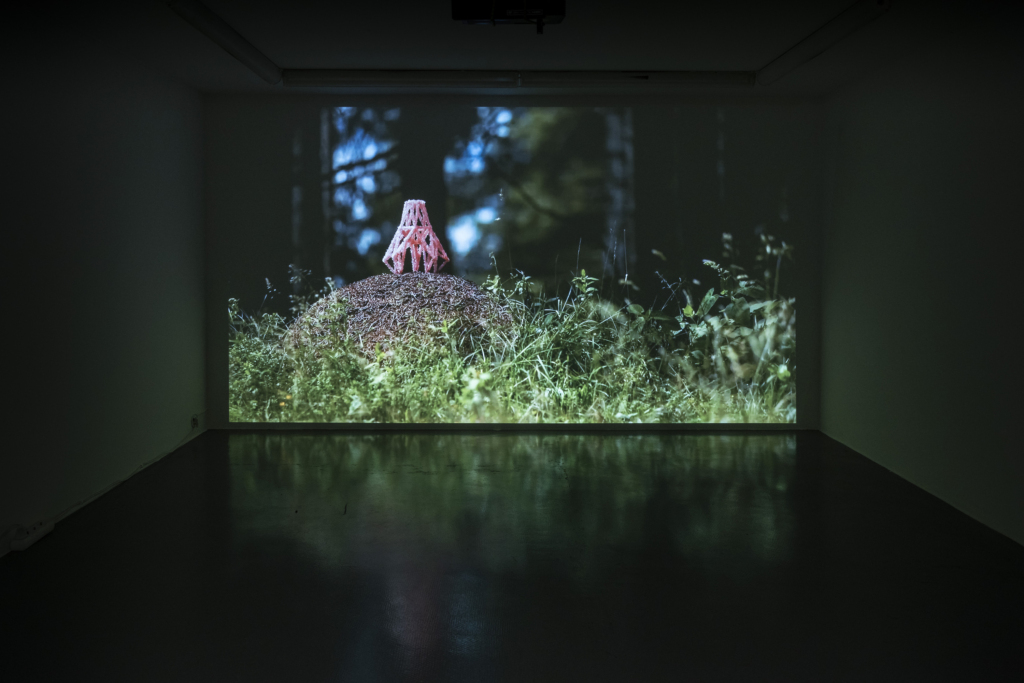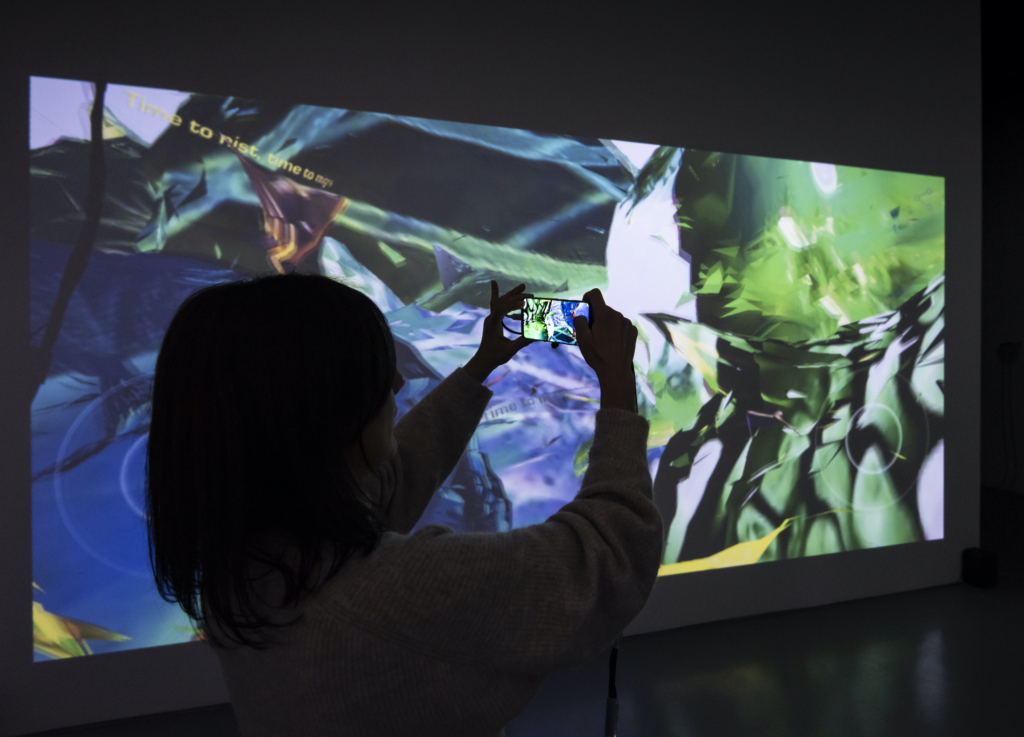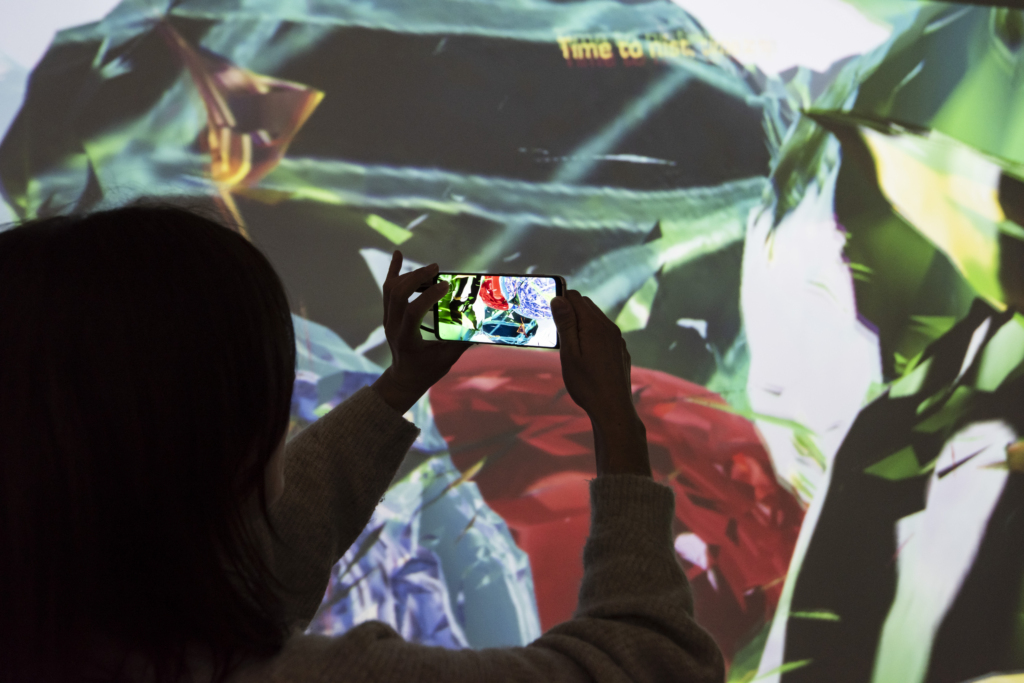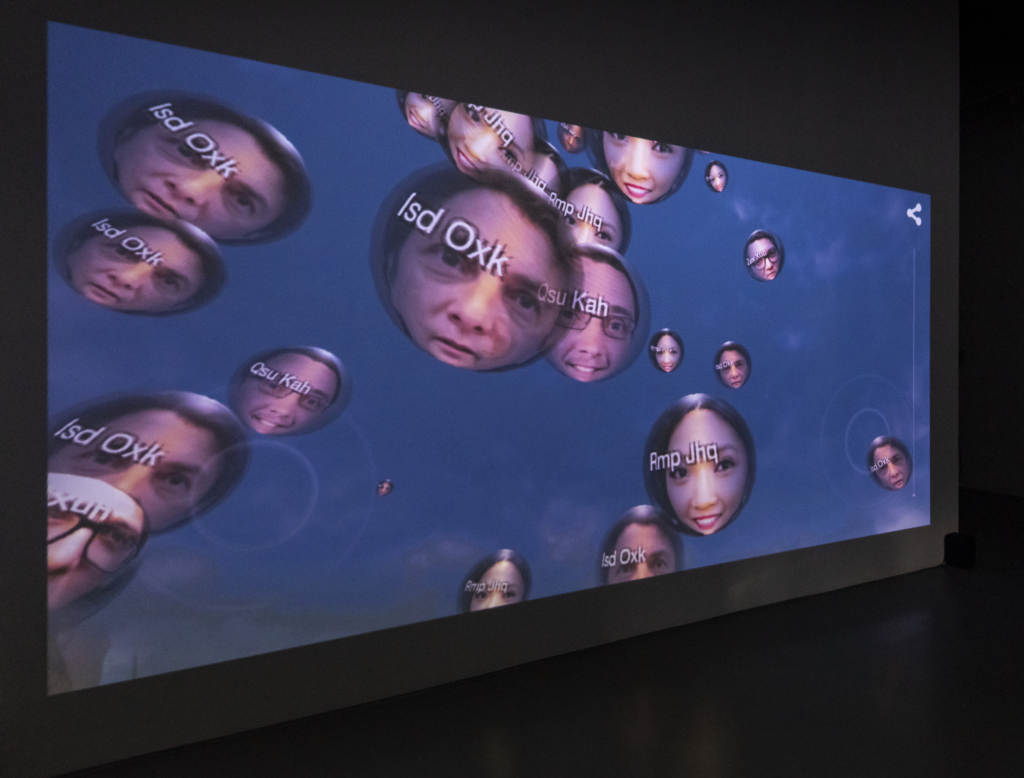Ira Konyukhova, Marc Lee & Lena Policzka
captured in-between
In a world turned upside down, where economic interests reign supreme, the rise of digital technologies brings both opportunities and risks. The digital revolution has profoundly impacted every area of life, continuously reshaping the framework of our reality through scientific discoveries and technological innovation. Science fiction is gradually becoming reality, and the question of how we wish to live—as individuals and as a society—becomes ever more urgent, as the utopian promise of our information- and prosperity-driven society increasingly transforms into a dystopian scenario.
Digital data streams and algorithms are playing an ever-greater role in shaping our identities—along with our desires and fears. In 21st-century democratic societies, reaching a shared consensus is becoming increasingly difficult, as countless and conflicting opinions collide in the media and on online platforms. The fusion of human and machine, already well underway through omnipresent technologies and their accompanying possibilities, is viewed by some as a desirable utopia—an apex of human self-optimization. For others, however, it represents the worst possible dystopia, where our individual freedoms are increasingly restricted and our physical existence gradually called into question. So do the promises of prosperity and digital technology lead us toward a better, more livable world—or is humanity, in its pursuit of progress and perfection, endangering its own foundations and becoming a digital shell of itself?
Numerous contemporary artists are engaging with the vast and ever-expanding themes that arise from the capitalist and digital permeation of our world. They use the full spectrum of available media to critically reflect on these developments. The exhibition captured in-between presents three exemplary artistic positions—Ira Konyukhova, Marc Lee, and Lena Policzka—each of whom, in different ways, explores the fine line between utopias and dystopias in our present-day world.
Ira Konyukhova (*1984, Udomlya, Russia) explores the question of how we perceive new technologies—whether as a threat or as a sign of civilizational progress—and positions her work precisely at the threshold where the fine line between utopia and dystopia becomes visible. She critically examines the effects of the omnipresent, media-driven attention economy on democracy and identity construction. Her works often revolve around the question of how and to what extent media-mediated political content influences both society and the individual. Issues surrounding the risks and potentials of artificial intelligence are central to her sculptures, video works, and immersive multimedia installations.
Marc Lee (*1969, Knutwil, Switzerland) creates network-based interactive installations, performances, video works, and VR projects. He experiments with information and communication technologies and explores the mechanisms that reveal creative, cultural, social, economic, and political processes on the internet. His works take the globalized and digitalized world as a starting point and show how our personal data—willingly or not—becomes a commodity and begins to shape our thoughts and actions through digital communication.
At the heart of Lena Policzka’s (*1987, Penzberg) artistic practice lies an exploration of the societal and scientific conventions of our post-industrial, technologically driven world—set in relation to natural phenomena. Her ongoing series Rush, for instance, examines whether humanity has displaced nature as the dominant force shaping our environment and, in doing so, subverted the long-standing laws of evolution. For the exhibition captured in-between, the artist has developed a large-scale installation consisting of the video work Rush: Trojan Horse and the sculpture Rush: Deposition of Utopia. Together, these works metaphorically illustrate humanity’s relentless drive for progress and self-optimization—only to unmask it as an inevitable downfall.
Text / Curator: Hannah Eckstein
